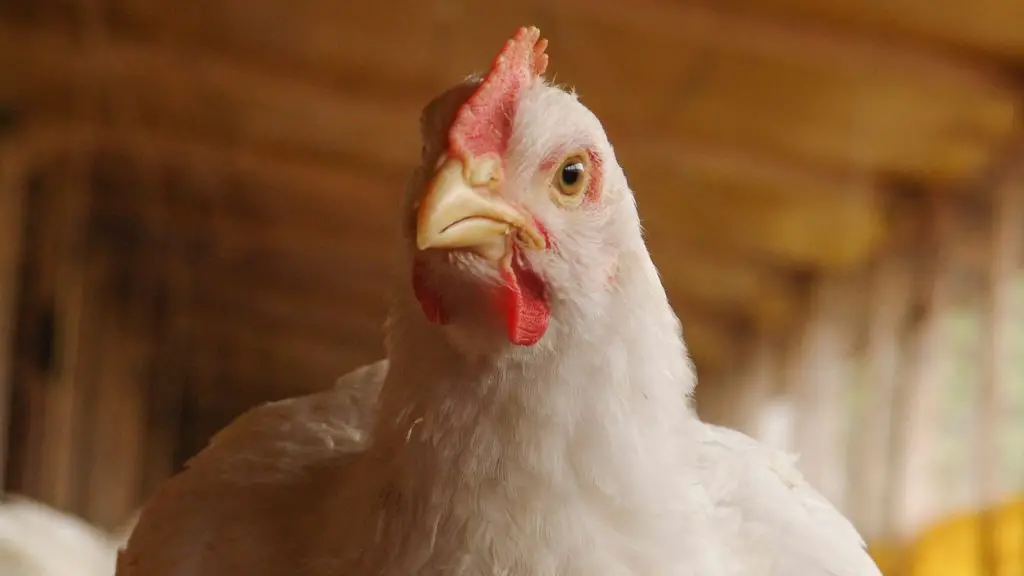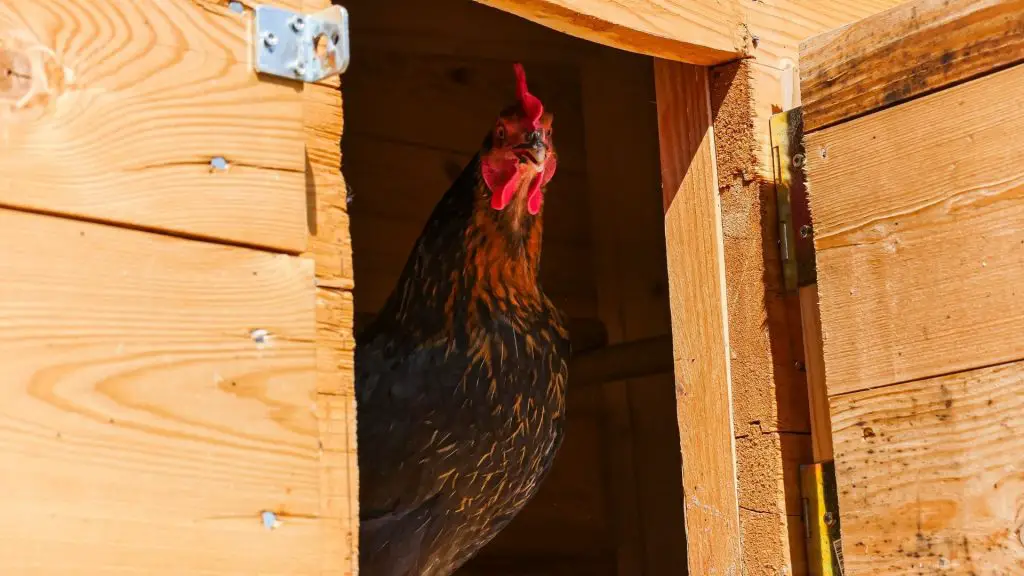The type of chicken coop you invest in plays a huge role in determining your flock’s health and overall comfort. Well-ventilated and spacious coops are ideal for large flocks, but small ones can also work if you don’t have as many chickens. So what’s the ideal size of a chicken coop?
How big should a chicken coop be? The ideal size of a chicken coop depends on the number of chickens you have. Ideally, a well-sized coop should have at least 2 – 4 square feet (0.19 – 0.37 sq m) per chicken, which will help prevent overcrowding. A well-spaced coop will have great ventilation, which should keep the environment healthy.
Read on for an in-depth discussion on the ideal size of chicken coops to keep your flock healthy, comfortable, and safe.
Factors That Influence the Size of a Chicken Coop

When building a coop for your flock, it’s crucial to choose the right size for all your chickens to be as comfortable as possible. Below are factors that influence the size of a chicken coop:
Flock Size
As a good rule of thumb, you should always consider the size of your flock when determining a coop’s size and dimensions. The larger your flock, the larger the coop you should have.
Since large flocks tend to be less harmonious than smaller ones, you’ll need to invest in larger coops if you plan to have many flocks of chickens.
As your chickens continue to increase, the trick is to add more square feet per chicken if they’re to coexist harmoniously.
Temperament
Temperament is an important factor to consider when determining coop size, especially when dealing with different chicken breeds.
For instance, Ameraucana hens might exhibit aggressive behavior towards other breeds like Rhode Island Red or Plymouth Rock.
Therefore, in case you suspect your different chicken breeds might become hostile to each other, then it’s best to build a coop with more square footage per hen.
Yard Size
The size of your yard is crucial when determining coop size. If you have a large yard and a large enough chicken run, then you won’t need an extra-large coop, especially if dealing with a relatively small flock.
However, if your chickens don’t have enough space in the run, it’s best to try and compensate for the space in the coop.
Chickens love to explore and will feel congested and get aggressive if they don’t feel comfortable enough. Therefore, try as much as possible to give your hens enough space to move inside and outside the coop.
Related: Chickens & Goats | Simple Guidelines for Safe Coexistence!
Usable Floor Space
When thinking about the square footage per chicken, it’s vital to remember that not all spaces will be used by your hens as you’ll need to place accessories like nesting boxes.
Drinkers and feeders will also take up floor space if you choose to place them inside the coop, so don’t forget to compensate by increasing the overall coop size.
Related: How to Make a Chicken Waterer? | A Complete Guide
Breed
Breed size is also a consideration you should make when determining the ideal coop size. Due to their smaller sizes, Bantam breed chickens won’t need much space per bird, like their larger and medium-sized cousins.
With large breeds like Brahmas and Langshans, you’ll need at least 3 – 4 square feet (0.28 – 0.37 sq m) per bird for them to coexist comfortably.
Where You Should Build a Chicken Coop?

The following are important factors to consider when deciding where to build a chicken coop:
Level Ground
The idea is to give your chicken coop a rock-solid foundation. To do so, you’ll need to build on level ground, or at least in a clear area where you can set up enough structures.
Flat surfaces are ideal for building chicken coops as they’re less prone to flooding due to standing water.
Foraging Areas
The closer a coop is to natural foraging areas, the happier your chickens will be. Chickens do explore and will almost certainly eat anything from weeds to grass, plants, seeds, and insects.
Therefore, when looking for the ideal coop location, you should also consider the size of the chicken run. Giving your flock enough space to forage and roam will make them comfortable and eliminate the need to scramble for food resources.
Strategic Locations With Windbreaks and Shade
A good windbreak will not only enhance the comfort of your chickens inside the coop but will also help reduce the rate of the structure’s wear and tear.
If you have large trees in your yard, then you might want to set up a coop right next to them. You can also take advantage of tall structures and use them as windbreaks for your coop. Alternatively, you can also build a solid fence to act as a windbreak and keep the coop temperatures even during the winter months.
It’s also important to set up a coop in a location with enough access to sunlight and shade. Coops should have shaded areas that chickens can move to and get some much-needed relief from the scorching summer sun.
Related: Where to Put Chicken Coop? | Information and Facts
How Tall Should a Chicken Coop Be?

Ideally, chicken coops should always be more than 3 feet (0.91 m) tall. A tall chicken coop comes with several advantages, top of the list being enough ventilation and roosting bars.
Building a coop with higher ceilings helps maintain a healthier internal environment due to increased ventilation. With a high coop ceiling, you can also add screened windows to improve air circulation.
Taller coops give you more freedom in terms of accessories as you can stack nesting boxes and save on space. Even more importantly, a tall coop allows you to set up roosting bars, which improves your flock’s overall comfort.
Try setting up roosting bars at least a foot above the ground. However, placing them higher will give you additional room for more roosts.
How Big Should My Chicken Coop Door Be?
While there are no standard sizes for chicken coop doors, most experts recommend choosing doors that are at least 10 inches (25.4 cm) wide and 10 inches (25.4 cm) high. However, the size of your coop door should be determined by the size of your chicken breeds and whether or not you have roosters.
Bantam-sized chickens don’t need excessively large doors and will do well with doors measuring 9 inches (22.86 cm) by 9 inches (22.86 cm). However, with standard chickens, you’ll need a slightly bigger door measuring 10 inches (25.4 cm) by 10 inches (25.4 cm) wide.
For the large breeds like Cochins, Brahmas, and Jersey Giants, doors measuring 12 inches (30.48 cm) by 12 – 14 inches (30.48 – 35.56 cm) should suffice.
Since roosters are usually larger than hens, they might prefer slightly larger doors. A standard door measuring 10 inches (25.4 cm) by 10 inches (25.4 cm) should be enough for roosters to squeeze in, but they wouldn’t mind larger doors, especially if dealing with large size breeds.
How Much Coop Space per Chicken?

The amount of space needed per chicken largely depends on the type of breed you have. Smaller breeds will need considerably less coop space compared to larger breeds.
For instance, Bantam breeds, due to their smaller sizes, won’t need much coop space compared to their larger counterparts. Bantam chickens will do with around 2 square feet (0.19 sq m) per bird, but you can even make the coop more spacious if your yard space and resources allow.
On the other hand, you’ll need more space per bird when dealing with medium and large-sized breeds. Around 3 – 4 square feet (0.28 – 0.37 sq m) per chicken should be enough to keep your large-sized breeds comfortable and healthy.
Should Chicken Coop Doors Be Above the Ground?

Ideally, chicken coop doors should be placed some inches above the ground. The recommended height is between 6 – 12 inches (15.24 – 30.48 cm) above the coop’s floor level to ensure the bedding doesn’t spill outside or interfere with the doorway.
You can place the door even higher from the outside. But you should set up a ramp that’ll help your chickens to get in and out. High doors are ideal if you live in an area with many predators like foxes, skunks, and raccoons.
Related: Where to Buy Chicken Coops? | Check Before Buying!
List of Sources
5 Things to Know Before Building a Chicken Coop
Chicken Breed Chart to Help Choose Your Chicken
